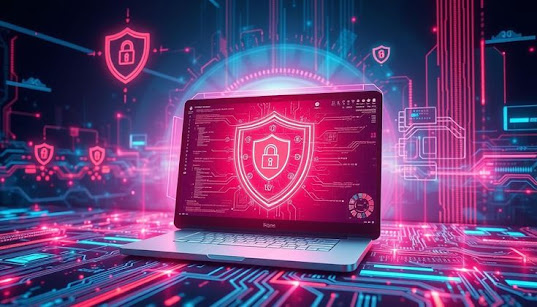Trending Tech Topics in 2025: What’s Shaping Our Digital Future
Technology in 2025 is not just about faster gadgets or shinier devices; it has grown into something deeper, shaping how we live, work, learn, and even heal. Unlike previous years where innovation was centered mostly on consumer electronics, this year feels different because technology is blending into the foundation of society. Artificial intelligence is no longer seen as an experiment or a side tool—it has become infrastructure. We see it not only in offices and businesses but also in classrooms, hospitals, and even in our homes. One of the most remarkable shifts is the rise of what experts call “agentic AI.” This form of artificial intelligence is capable of taking independent actions without constant human prompting. It can handle meeting schedules, manage workflow across large teams, or even coordinate customer support interactions without being asked. That saves time and resources, but it also raises a serious debate about how much control humans should give away. If an AI can act independently, where do we draw the line between assistance and autonomy?

Education is another area where AI is leaving a permanent mark in 2025. Instead of classrooms depending solely on teachers, we now see personalized AI tutors guiding students through subjects at their own pace. These intelligent systems adapt to a learner’s strengths and weaknesses, offering customized lessons that would be nearly impossible for a single human teacher to provide in a large classroom setting. This could mean a fairer learning environment where slow learners don’t get left behind, but it also brings new concerns about whether students are becoming too dependent on machines to think for them. The balance between human mentorship and digital guidance has never been more critical.

Another major conversation dominating this year is sustainability. For too long, the technology sector has overlooked its impact on the environment. Research suggests that enterprise IT could be responsible for a significant portion of global greenhouse gas emissions by 2040, and 2025 is the year when companies are finally facing this reality. Data centers, which power cloud storage and AI models, are being re-engineered to run on renewable energy sources like solar and wind. Tech companies are now designing processors that are energy-efficient, capable of delivering high computational power without draining excessive electricity. On the consumer side, people are holding on to their smartphones and laptops longer instead of upgrading every single year, encouraged by modular designs and better repair policies. This shift signals a cultural change—technology is not just about innovation anymore, it is about responsibility. Companies that ignore the environmental side of technology risk being left behind.
Alongside AI and sustainability, quantum computing is beginning to move from research labs into practical use cases. For years, the word “quantum” felt like science fiction, but in 2025 it is turning into a business reality. Pharmaceutical companies are experimenting with quantum systems to simulate molecules at the atomic level, dramatically speeding up the discovery of new medicines. Climate scientists are using them for more accurate predictions, while financial institutions are exploring ways to use quantum algorithms for risk assessment. At the same time, this technology poses one of the greatest cybersecurity challenges we have ever faced. Quantum systems are powerful enough to break traditional encryption methods, which means banks, governments, and businesses must adopt post-quantum cryptography to stay secure. The paradox is striking: the very same technology that threatens to weaken cybersecurity may also provide the tools to strengthen it.

While quantum is expanding on the invisible side of computing, extended reality is transforming how humans experience the visible world. Augmented reality glasses are now lighter, cheaper, and more practical, moving beyond being a futuristic novelty to a tool used daily in workplaces and homes. Surgeons can operate with real-time digital overlays, factory workers can receive step-by-step instructions projected onto their field of view, and shoppers can try on clothes virtually without ever stepping into a store. In parallel, smart wearables are pushing health technology forward. Devices are no longer limited to watches; smart rings, biosensors, and even clothing are capable of monitoring vital signs, sleep patterns, and blood sugar levels. Healthcare is shifting away from hospital-centered treatment to continuous, wearable-first monitoring, giving individuals more control over their health. Yet this convenience is balanced by an uneasy question: who owns the vast amount of health data collected every second—the patient, the hospital, or the company that makes the device?Automation has always been part of technological progress, but in 2025 we are seeing a new scale called hyperautomation. Unlike traditional automation that focuses on repetitive tasks, hyperautomation connects multiple systems into an ecosystem managed by artificial intelligence. In industries, this means entire factories running on digital twins—virtual replicas of machines that predict breakdowns before they occur. Logistics companies now track global supply chains with real-time IoT sensors, and cities are using automation to reduce energy use and manage traffic more efficiently. Homes too are becoming smarter, no longer limited to a voice assistant playing music. Modern smart homes integrate energy management, security, and health monitoring into a single connected system. While this level of automation promises unmatched efficiency, it also magnifies cybersecurity risks since every connected device becomes a potential entry point for attackers.

With these rapid developments, governance and ethics are no longer optional—they are necessary. Artificial intelligence has been criticized for bias and opaque decision-making, and in 2025, companies are being held accountable to fix this. AI governance platforms are emerging as crucial tools, helping organizations monitor and audit how their algorithms work. Governments are also stepping in with regulation. The European Union’s AI Act is one example of a strict framework that demands transparency, safety, and ethical standards from companies deploying AI systems. Similar efforts are being explored in the United States and Asia. This new regulatory wave means innovation cannot simply move fast and break things; it must move fast and stay accountable.Beyond ethics, 2025 has introduced new programming practices that reflect the influence of AI on development itself. A phenomenon known as “vibe coding” is spreading quickly among startups and experimental developers. Instead of writing detailed code line by line, developers describe what they want in natural language, and AI systems generate the code for them. This allows rapid prototyping and makes software development accessible to non-programmers. However, it is not without risks. AI-generated code can carry hidden vulnerabilities and may not always reflect the precision that human engineers bring. Still, vibe coding is a trend worth watching because it represents how deeply AI is reshaping not just the outcomes of technology but the process of creating it.When we step back and look at all of these trends together, it becomes clear that technology in 2025 is not just about incremental updates. It is about integration—about weaving digital intelligence, sustainability, and automation into the very fabric of society. Workplaces are evolving as AI takes over repetitive tasks, pushing humans to focus on creativity, problem-solving, and emotional intelligence. Education is becoming more personalized, but with a risk of overreliance on machines. Privacy is more fragile than ever as wearable devices and smart ecosystems collect data in real time. Businesses that adapt to sustainable practices, adopt automation wisely, and embrace governance will have the edge. Security remains a critical challenge, especially as quantum computing threatens traditional encryption.
The most important truth is that technology in 2025 is no longer separate from our lives—it is inseparable. Whether it is in the classroom, the factory, the hospital, or the home, it influences the decisions we make and the opportunities we have. Yet with this power comes responsibility. We need to ask hard questions: who is accountable for AI’s decisions, how secure are we in a hyperconnected world, and can we balance innovation with sustainability? The answers to these questions will not come easily, but they will shape the next decade of our digital future. One thing is certain: 2025 is not just another step in the evolution of technology—it is a leap into a world where digital systems are as vital as air, water, and energy.








Nice Information
ReplyDelete